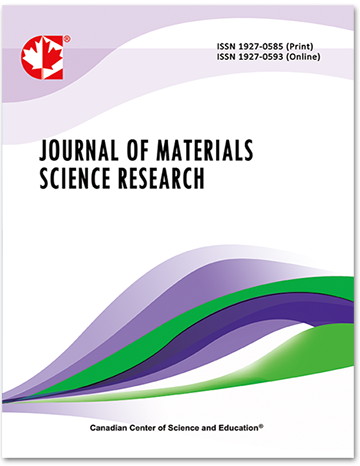Microwave Absorbing Properties of DBSA-doped Polyaniline/BaTiO3-Ni0.5Zn0.5Fe2O4 Nanocomposites
- Chapal Das
- Avinandan Mandal
Abstract
Development of RADAR absorbing materials (RAMs) is the most important research area in camouflage application mainly in Defence. Aniline was polymerized in presence of dodecylbenzene sulphonic acid (DBSA) as a functionalized protonic acid in water medium to form DBSA-doped polyaniline (PANI). Ni0.5Zn0.5Fe2O4 (NZF) nanoparticles were synthesized by co-precipitation method along with Bariun Titanate (BaTiO3) particles to form BaTiO3-Ni0.5Zn0.5Fe2O4 nanoparticles. Both DBSA-doped PANI and BaTiO3-Ni0.5Zn0.5Fe2O4 nanoparticles were thoroughly mixed in different ratios and the mixtures were dispersed in Epoxy Resin (LY556) matrices to produce RAMs. The spectroscopic characterization of the composite materials were examined by using X-ray diffraction (XRD), scanning electron microscope (SEM), Energy-dispersive X-ray spectroscopy (EDX), High resolution transmission electron microscopy (HR-TEM). The microwave absorbing properties return loss (dB) and important parameters such as complex relative permittivity (?r´ - j?r´´), complex relative permeability (µr´ - jµr´´) were measured in different microwave frequencies in X-band (8.2-12.4 GHz) region. The composite materials showed that a wider absorption frequency range and showed maximum return loss of -15.78 dB (>97% power absorption) at 10.8 GHz. The mechanism of microwave absorption occurs mainly due to the dielectric loss rather than magnetic loss.
- Full Text:
 PDF
PDF
- DOI:10.5539/jmsr.v1n1p45
Journal Metrics
Impact Factor 2022 (by WJCI): 0.583
Google-based Impact Factor (2021): 0.52
h-index (December 2021): 22
i10-index (December 2021): 74
h5-index (December 2021): N/A
h5-median (December 2021): N/A
Index
- CAS (American Chemical Society)
- CNKI Scholar
- Elektronische Zeitschriftenbibliothek (EZB)
- EuroPub Database
- Excellence in Research for Australia (ERA)
- Google Scholar
- Infotrieve
- JournalTOCs
- LOCKSS
- NewJour
- PKP Open Archives Harvester
- Qualis/CAPES
- SHERPA/RoMEO
- Standard Periodical Directory
- Universe Digital Library
- WJCI Report
- WorldCat
Contact
- John MartinEditorial Assistant
- jmsr@ccsenet.org
